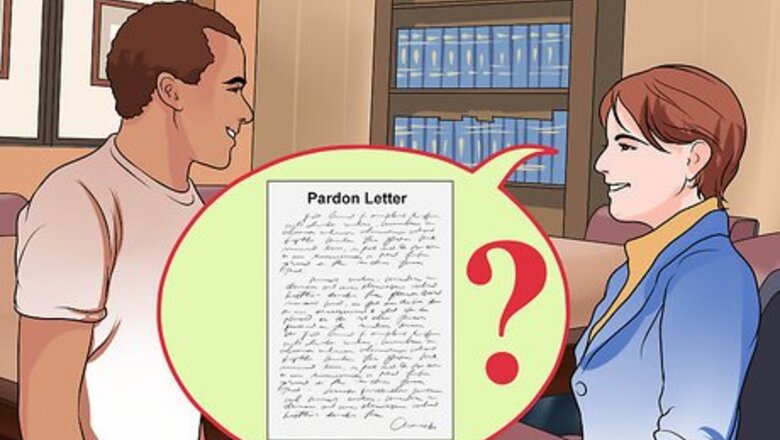
views
X
Research source
If you know someone – either personally or professionally – who is seeking a pardon, he or she may ask you to write a letter in support of his or her pardon application. Although specific requirements vary depending on the jurisdiction in which the person is seeking a pardon, the basic process will be similar.
Gathering Information

Talk to the person seeking a pardon. You need to find out precisely what kind of information is needed from you and in what capacity you should write your letter. The person seeking a pardon can explain to you why he or she is asking you to write a letter, and what needs to be included. Keep in mind that your letter will be submitted under penalty of perjury, so avoid agreeing to write anything if you have no direct knowledge of it or can't verify its truth. You also need to have a good idea of why the person is seeking a pardon and what he or she expects to gain if granted the pardon. Typically, this needs to be something apart from simply wanting to clear his or her name, or wanting to restore rights such as the right to bear arms. Rather, there should be some independent goal, such as being licensed in a particular professional field or advancing at work, that can only be achieved if a pardon is granted.
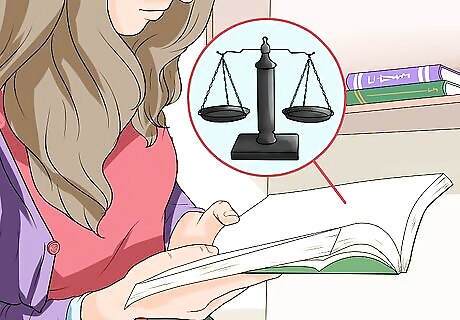
Review the jurisdiction's requirements. Each jurisdiction has specific rules regarding who can write certain letters in support of someone's pardon, and what should be included in that letter. For example, if you are related by blood or marriage to the person seeking a presidential pardon for a federal crime, you cannot be used as a primary character reference.
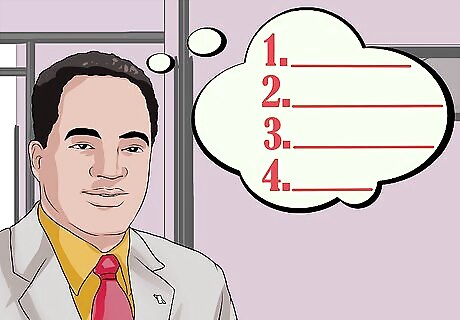
Brainstorm appropriate examples. Based on your knowledge of the person seeking a pardon, think about traits or events that will support the points you need to make in your letter. Make sure these examples or anecdotes are things you directly observed personally, and that happened within the time frame you've known the person. Simply relating a story you heard from someone else before you met the person will have no value to the people evaluating the application. Organize your examples into specific traits that you believe demonstrate why the person should be pardoned. Stick to three or four traits for which you have the strongest support to use in your letter.

Confirm your facts. The person seeking a pardon should be able to verify any dates, names or other facts you include in your letter. Your descriptions should be detailed and include as many relevant facts as possible, but you may need to check either with the person for whom you're writing the letter or against other records to make sure the facts you're listing are correct. For example, if you're writing a pardon letter for someone who previously worked under your supervision, you should include the specific dates that person worked with you and the reason he or she separated from the company. You may need to get the dates from the human resources department of the company where you both worked if you're unsure.
Drafting Your Letter
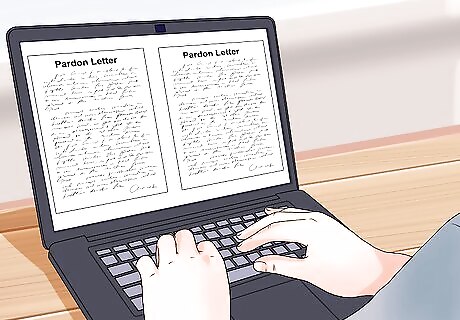
Search for samples. You may be able to find examples of letters that people have written for others that you can use as guides. In some cases, the board considering pardon applications prefers a particular form be used. If you must use a particular form to provide your recommendation, the person seeking the pardon should provide it to you. For example, if the person is applying for a pardon from the president for a federal crime, the federal pardon attorney prefers if you use the official affidavit form. However, you also can submit a letter provided it contains adequate identification and contact information. Standard affidavit forms also are preferred in many states such as California.

Use business letter format. Your letter should be typed, not hand-written, using the same format as a traditional business letter. You should be able to find a template you can use within your word processing application. However, as a general rule, you should make sure the text of your letter is left-justified and single spaced, with a double space between paragraphs.
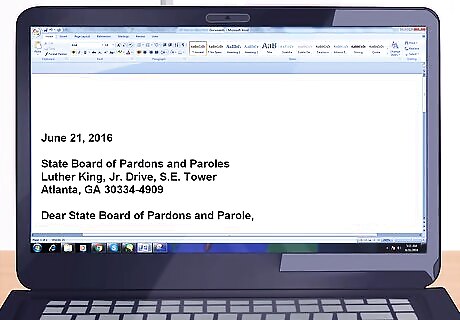
Address the letter appropriately. You'll need the correct name, title, and address of the person or committee to whom your letter will be sent. Even though you may be giving the letter to the person seeking a pardon so he or she may file it with the rest of the application, you should include the address of the committee or office reviewing the application at the top of the letter, as though you were sending it directly to them. Find out if you should write the letter to a specific individual or to a group. In state pardon cases, you can simply address your letter to the state pardon board, but be sure to use the board's official title. If you are expected to address the letter to an individual, make sure you get his or her name and title correct and know what form of address to use (Mr., Ms., Your Honor, etc.)
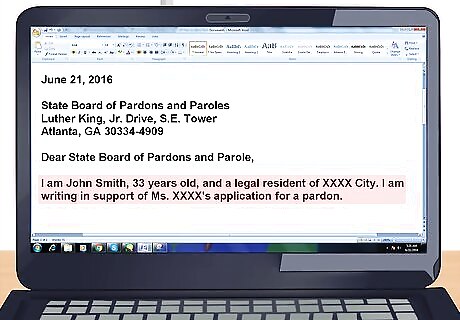
Introduce yourself. Begin your letter by stating your name and place of residence as well as any other required or relevant information regarding your identity. State clearly and succinctly that you are writing to support the person's application for a pardon. You also should indicate that you have knowledge and understanding of the criminal conviction for which the person is seeking a pardon. Essentially, your first paragraph should get straight to the point of who you are and why you are writing the letter. If you prefer, you can also include a sentence that summarizes the reasons you're writing or the points you plan to cover in your letter. This can be especially helpful if your letter is more than a page or two.
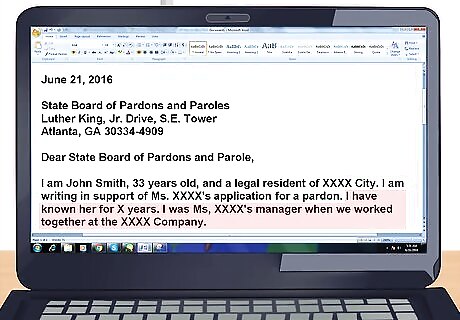
Explain your relationship to the person seeking a pardon. After you've introduced yourself, you should briefly describe how you know the person seeking a pardon, how long you've known him or her, and in what capacity. Your occupation may have relevance even if you aren't writing the letter within your professional capacity, but you must separate what you do from how you know the person. For example, you might be a lawyer, but if you've never worked with the person professionally as his or her attorney, your letter should indicate that. Let the board or committee know how long you've known the person, and in what capacity. For example, you might have been the person's supervisor at work for five years. Establish your connection to the person seeking a pardon, and use that connection to explain why you believe the person should be granted a pardon. Your detailed examples that you relate in the rest of the letter will support the points you make here.
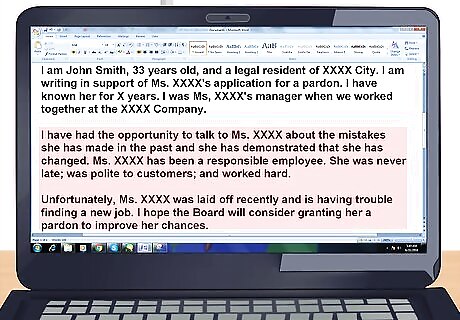
Write the body of your letter. Relate the examples you've seen to demonstrate your support for the person to be granted a pardon. Make sure the reasons and examples you list relate to the capacity in which you know the person. For example, if you have been the person's neighbor for 20 years, you may have knowledge of his or her lifestyle and home life, but you probably don't know anything about his or her work or professional reputation. Similarly, your recommendation should relate to the person's reasons for seeking a pardon. If the person is seeking a pardon because of his or her difficulty finding work, your observations as a former supervisor could potentially be of great benefit to the application. It also may be important to include information about the conviction. If you've talked to the person seeking a pardon about the conviction and can relate that he or she feels remorse and has changed since then, these details can be of benefit. Try to keep one reason or example as the focus of each paragraph, rather than having one paragraph with a laundry list of reasons. When you've finished the body, include a concluding paragraph that summarizes everything you've said and restates that you believe the person is a good candidate for a pardon and that you believe his or her application should be granted.

Create your signature block. Leave space to sign your name by hand, then type your name and any additional information as appropriate. You should leave at least four lines to sign your name before you type it. However, you may want to leave more space if you have a particularly large signature. Make sure you include accurate contact information, since the committee or board evaluating the application may want to contact you about your letter or ask you further questions.
Submitting Your Letter

Allow your letter to be reviewed. If the person requesting a pardon is represented by an attorney, he or she may want to review your letter before you sign it. The attorney has legal knowledge of both the person's conviction and the pardon process, and can make sure you're not inadvertently saying anything that could hurt, rather than help, the person's application. Even if the person seeking a pardon isn't represented by an attorney, you might consider letting someone else read your letter before you sign it to make sure it's free of any grammar and spelling errors, and that the letter as a whole flows and makes sense.

Sign your letter. Often the letter must be signed in front of a notary to verify your identity as the signer of the document. For example, if you are writing a character reference for someone seeking a presidential pardon for a federal crime, the signature must be witnessed by a notary public. A notary public will check your government-issued photo identification and verify that you are the person signing the letter. He or she also will confirm that you are signing the letter voluntarily and with knowledge of its contents.
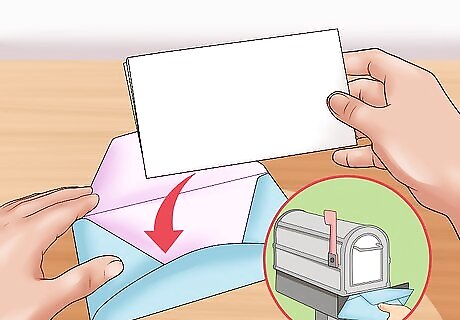
Give your letter to the appropriate party. You may be asked to mail the letter directly to the review board, or the person for whom you're writing the letter may have to submit all materials together in one packet. For federal pardons, the person seeking the pardon must submit your letter at the same time he or she submits all other materials related to the pardon petition.

















Comments
0 comment